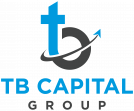As an investor, you’ve got to know exactly why you’re choosing a particular investment in addition to the step by step and what to expect in investing in these deals. If you’re considering investing in alternative assets that generate passive income, you’re probably wondering, “What should I expect before and after investing in a syndication?”
Guess what? You’re in luck! We are going to talk about it below as you read along.
Real Estate syndications are processed on a first-come, first-serve basis. Thus, sponsors use a soft reserve to help them determine who wants to invest for the deal. The soft reserve is simply a way for you to reserve your spot in the offering early in the process. As an investor, it gives you an additional amount of time to review the documentation.
What to Expect AFTER investing?
Here are some insights into what(and when) a passive investor can expect after investing in a syndication deal.
- Investor Guide – upon closing
- Progress updates – monthly
- Cash flow distributions – either monthly or quarterly
- Financial reports – quarterly
- Schedule K-1 – annually
Investor Guide – Upon closing
Upon the close of a real estate syndication deal, expect an email notification letting you know that the property closed successfully. The email will have an Investor Guide that shows an overview of what to expect, frequently ask questions, and a contact person so you’d be able to know who to reach out for further assistance.
Progress Updates – monthly
Each month thereafter, you should expect an email update on the progress of the real estate syndication project. Depending on the deal’s structure, you may receive monthly or quarterly cash flow distributions.
The monthly email will likely contain current occupancy rates, the number of renovated units, whether progress is in line with the business plan, and, occasionally, some photos of the latest progress.
The monthly emails are mostly anecdotal and include a quick, high-level overview of multiple initiatives occurring at the property. More details are provided in quarterly financial reports
Cash flow distributions – either monthly or quarterly
Depending on the deal’s structure, you may receive monthly or quarterly cash flow distributions. This will be outlined in the syndication’s PPM.
One of the benefits of being invested into a real estate syndication is the higher degree of visibility on the monthly on goings of the property.
Financial reports – quarterly
Every quarter, you can expect to receive a detailed financial report, including the rent roll and the profit and loss statement from the trailing twelve months. This may not be a fun part to read but this is definitely a must read. If you’re more of a spreadsheet nerd, then this is the update for you!
Schedule K-1 – annually
Annually, you should receive your personalized Schedule K-1 tax report from your sponsor. This tax document reports the income, deductions and any credits applicable to owner/investors. Each investor will receive their own K-1.
Let’s Recap
Once all investor funds have been submitted and the deal closes, the sponsoring team begins executing the business plan. This generally consists of some value-add components like renovations, property improvements, and increasing rents, and more.
Investing into a real estate syndication is really a partnership. There’s a lot of moving parts the syndicator is responsible for. They should be making it easy for you to invest as well as providing transparency on the asset’s execution of the business plan.
If you want to learn more about our strategy and how we position our assets, check out www.tbcapitalgroup.com

